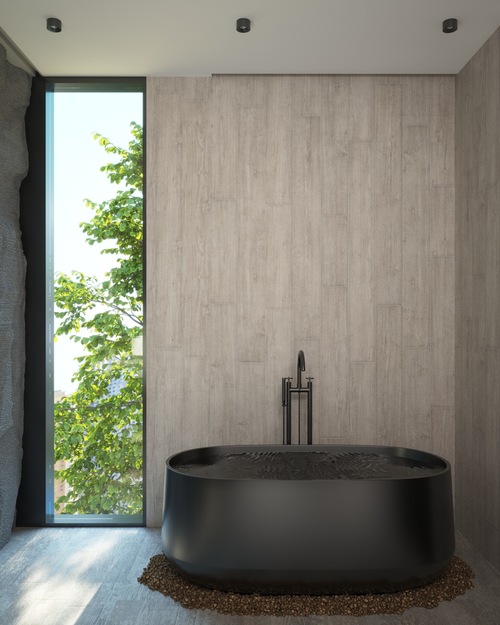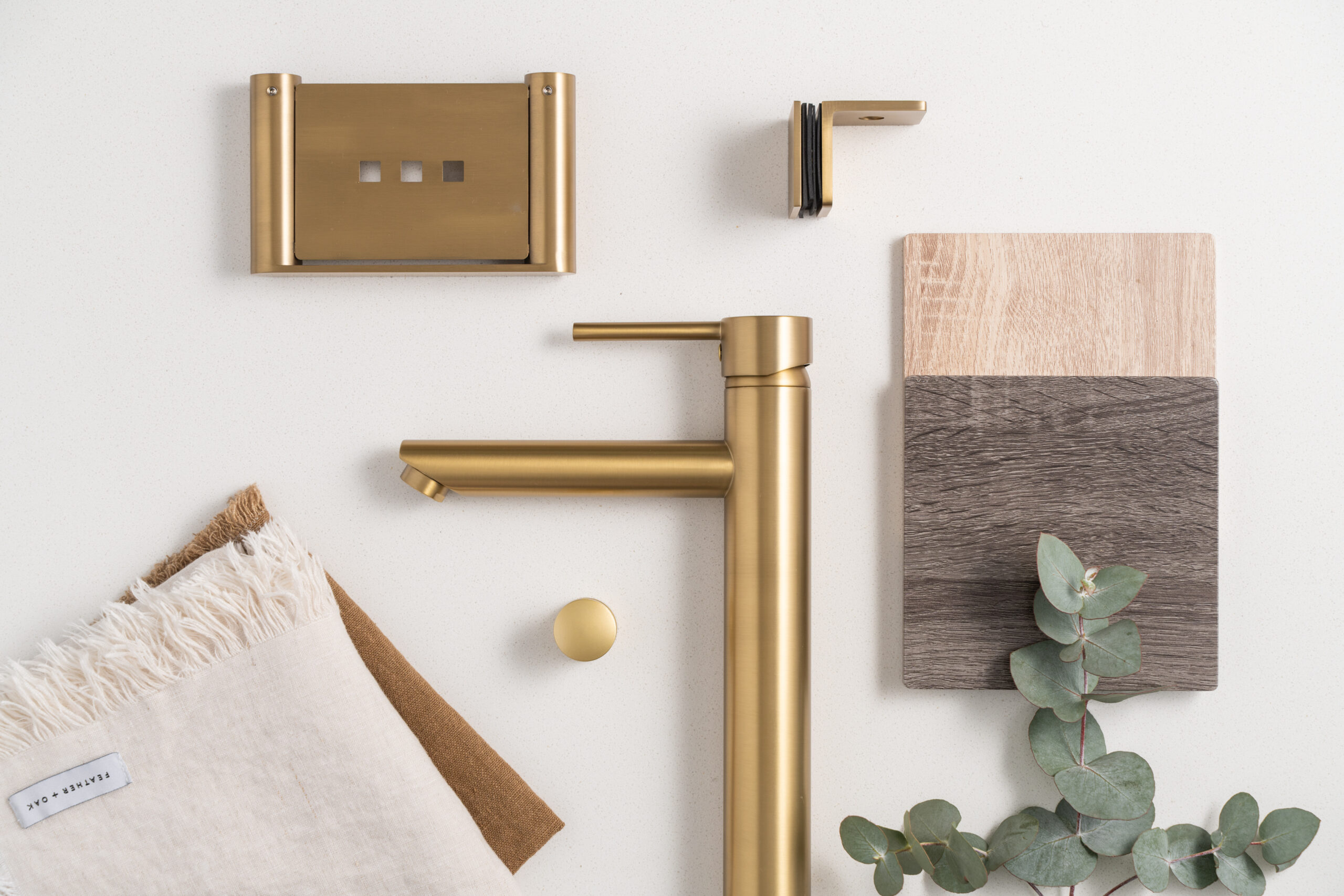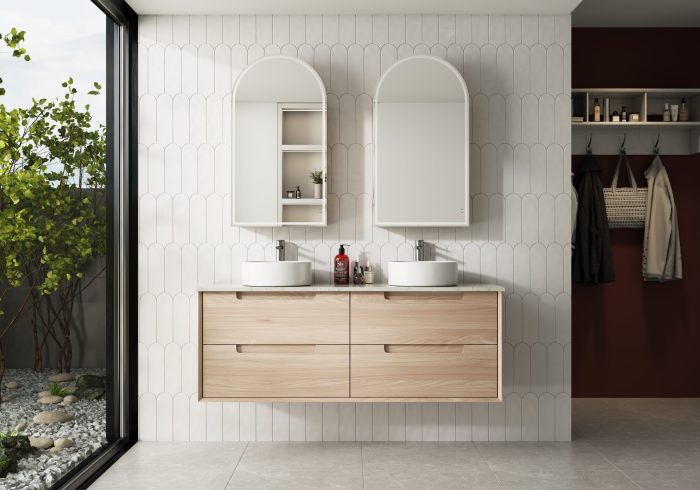The bathtub is an essential bathroom product in our life. Choosing the right bathtub materials is important but can be a difficult task. Like when buying your first car, there are many factors to take into account, including your budget and, of course, the different bathtub materials that will fit your lifestyle and need. Today, we’ll look at some of the more common bathtub materials, as well as some of their pros and cons. Then also we will give you some suggestions about how to choose the best bathtub material for your home.
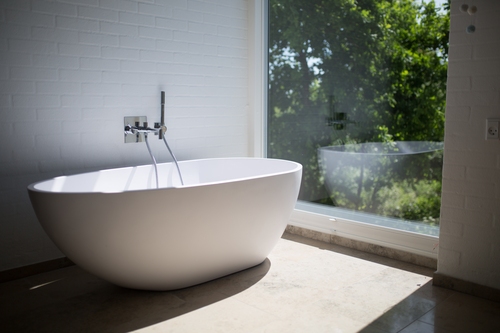
What Are the Common Bathtub Materials?
With so many materials from acrylic and ceramic to cast iron, copper, stone resin, etc to choose from, so know what are bathtubs made of is very important to familiarize yourself with these bathtub materials. Let’s see the detailed bathtub material comparison below:
Fiberglass
Fiberglass is a type of reinforced plastic that is formed into layers before being molded into the shape of a bathtub and coated with a layer of gel-coat resin.
Pros: Affordable, lightweight, and easy to maneuver and repair.
Cons: Brittle, porous, absorbs water, tends to crack, deteriorates over time, and has a tendency to flex and warp.
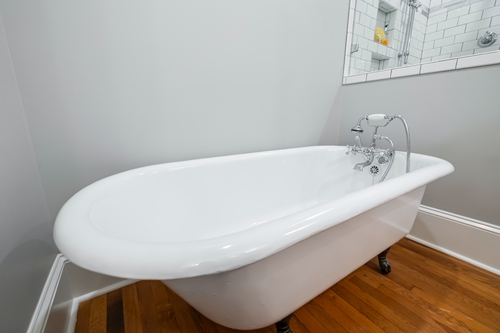
Acrylic
An acrylic bathtub is made of a solid sheet of materials, including petrochemicals, stabilizers, resins, fillers, and the appropriate dye. This is then heated, and molded into the shape of a bathtub reinforced with fiberglass.
Pros: Non-porous, retains heat, and repels mildew and stains.
Cons: Flexes, prone to scratching, and more expensive than fiberglass.
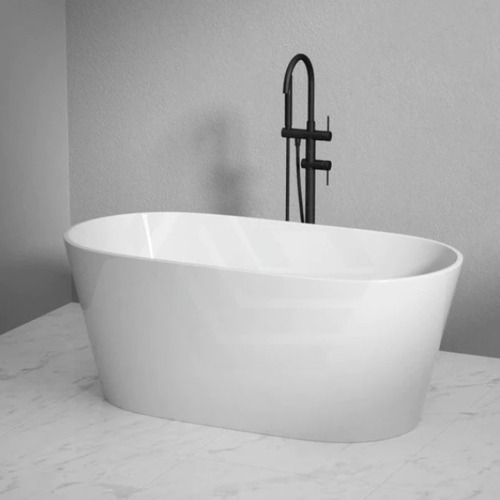
Cast Iron
Molten iron is poured directly into a bathtub mold before being smoothed out and coated in enamel.
Pros: Highly durable, resistant to scratches and chipping, requires minimal cleaning and has high heat retention.
Cons: Heavy, requires additional support, and expensive.
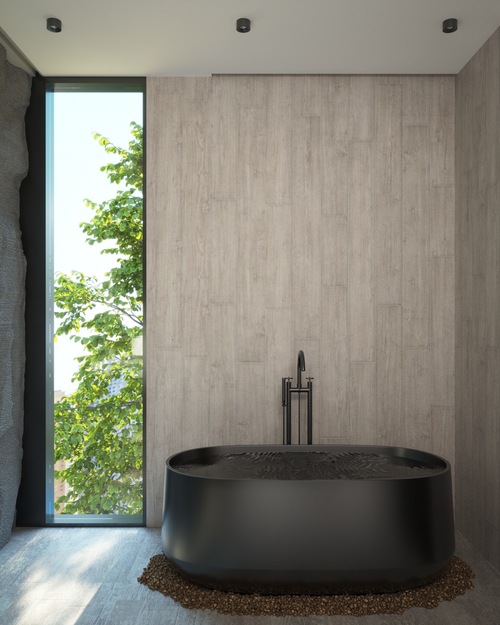
Ceramic
Made by joining together many ceramic tiles, which are essentially clay that has been heated to high temperatures until it hardens.
Pros: Wide range of options for size, shape, and style, and relatively inexpensive.
Cons: Requires active maintenance, grout deteriorates and crumbles, uneven and bumpy surface, making it uncomfortable to lay in.
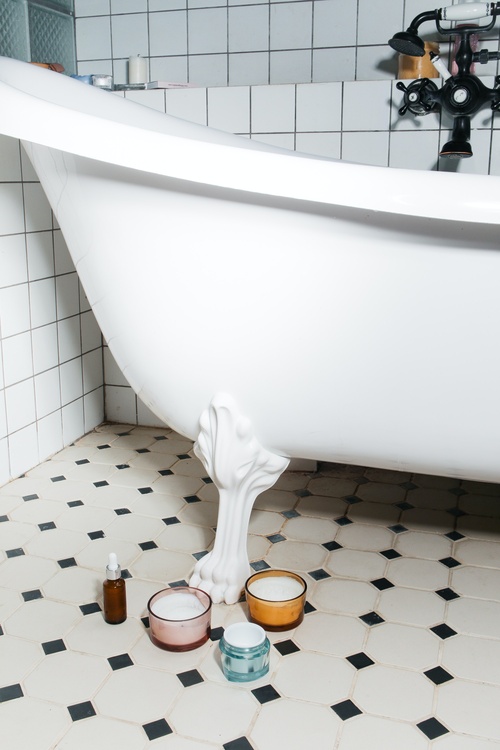
Stone Resin
Stone resin is a material used for stone resin bathtubs to get that look of natural stone.
Pros: Natural and elegant material, extremely durable, and heat-retaining.
Cons: Expensive, heavy and requires special installation, and requires regular maintenance to prevent staining and discoloration.
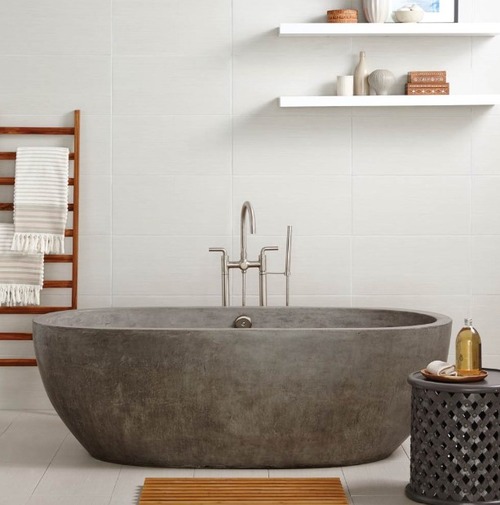
Copper
Copper bathtubs are created by hammering together multiple sheets of pure copper to form the shape of a bathtub.
Pros: Unique and elegant, naturally antimicrobial, and durable.
Cons: Expensive, requires regular maintenance to prevent discoloration and tarnishing and may develop leaks over time.

Marble
Marble is made from crushed limestone and resin, then finished with a layer of gel coat to evoke the appeal of the Romans.
Pros: Luxurious and elegant, naturally heat-retaining, and durable.
Cons: Expensive, requires regular maintenance to prevent staining, etching, and discoloration, and is heavy, requiring special installation.

Porcelain
Porcelain tubs are made of cast iron or stamped steel, then coated with a layer of porcelain enamel—a material created by fusing powdered glass to a thin substrate at high temperatures.
Pros: Durable, easy to clean and maintain, and heat-retaining.
Cons: Can chip and scratch, can be expensive, and may crack over time.
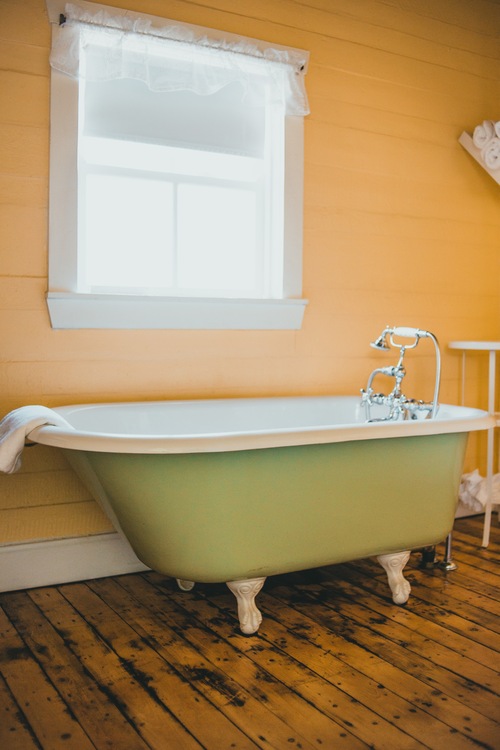
Wooden
A handcrafted bathtub made from various types of wood.
Pros: Natural and elegant, can be customized to fit your bathroom design and gives a warm and comfortable feeling.
Cons: Requires regular maintenance to prevent warping, cracking, and water damage.
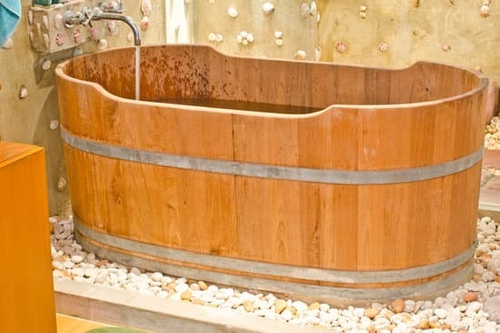
How To Choose Bathtub Material For Your Bathroom?

Now that you are familiar with the different bathtub materials, you can look for your ideal bathtub with the best material for bathtubs by considering several factors.
- Heat Retention – If you love taking long, warm baths, then heat retention is an important feature to consider. Some materials, like cast iron or copper, are known for their ability to retain heat for longer periods of time.
- Damage Resistance – Not all materials are created equal when it comes to resisting damage from scratches, stains, or cracks. Always choose durable ones for long use. For example, porcelain-enameled steel is great at resisting stains and scratches, while acrylic may not rust or mold easily.
- Price – It’s important to think about both the upfront and long-term costs of your purchase. Consider the cost of installation, maintenance, and potential replacement in the future. If your budget is tighter, consider purchasing a tub made from wood or fiberglass. But if you have more to spend, opt for a sturdier and longer-lasting material like marble or stone resin.
- Cleaning and Maintenance – Every bathtub requires regular cleaning, some materials like acrylic and ceramic may be more difficult to clean than cast iron or marble. Research the cleaning products that will work best for your tub’s material and take into consideration the time and effort it would take to keep your tub clean.
- Installation – The weight and flexibility of your tub’s material will influence how easy it is to install. More challenging installations may come with a higher cost. For example, lighter materials like acrylic and fiberglass are easier to install and tend to cost less; while heavy materials, like cast iron and stone, are more expensive but sturdier and longer lasting.
- Bathtub life – How long the bathtub will last is also an important factor. Some materials like copper and marble have a longer life than fiberglass or acrylic.
Conclusion
In conclusion, the best way to decide which bathtub materials are right for you is by researching and doing bathtub material comparisons and thinking about how each material fits into your lifestyle and bathroom design. With thoughtful consideration of all types of bathtubs and the right choice, your bathtub will be an integral part of your bathroom that you’ll enjoy using for years to come.
FAQ about Bathtub Materials
Acrylic bathtubs are more popular due to their durability, heat retention, and easy-to-clean features. However, Fiberglass bathtubs are more budget-friendly and easy to install. It’s difficult to say which one is better, as it largely depends on personal preference and specific requirements of the bathroom.
Acrylic is considered to be the safest material for bathtubs.
First, it’s a high-quality plastic that is sturdy, lightweight, and resistant to damage from heat, chemicals, mold, and mildew.
Second, for added peace of mind, acrylic has a non-slip texture so you can enjoy your soak without the worry of slipping or sliding on a wet surface.
Last but not least, acrylic won’t corrode or rust like metal tubs often do nor will it peel like fiberglass.
It depends on how much time has passed and how well you have cared for your tub. Generally, acrylic is an incredibly durable material, so if it has been appropriately maintained, it should hold up just as well as any other material.
On the other hand, with inadequate care and/or years of use, yellowing may start to occur due to oxidation. So proper maintenance of your acrylic bathtub is key to avoiding discoloration and keeping your bathroom looking new and fresh!

